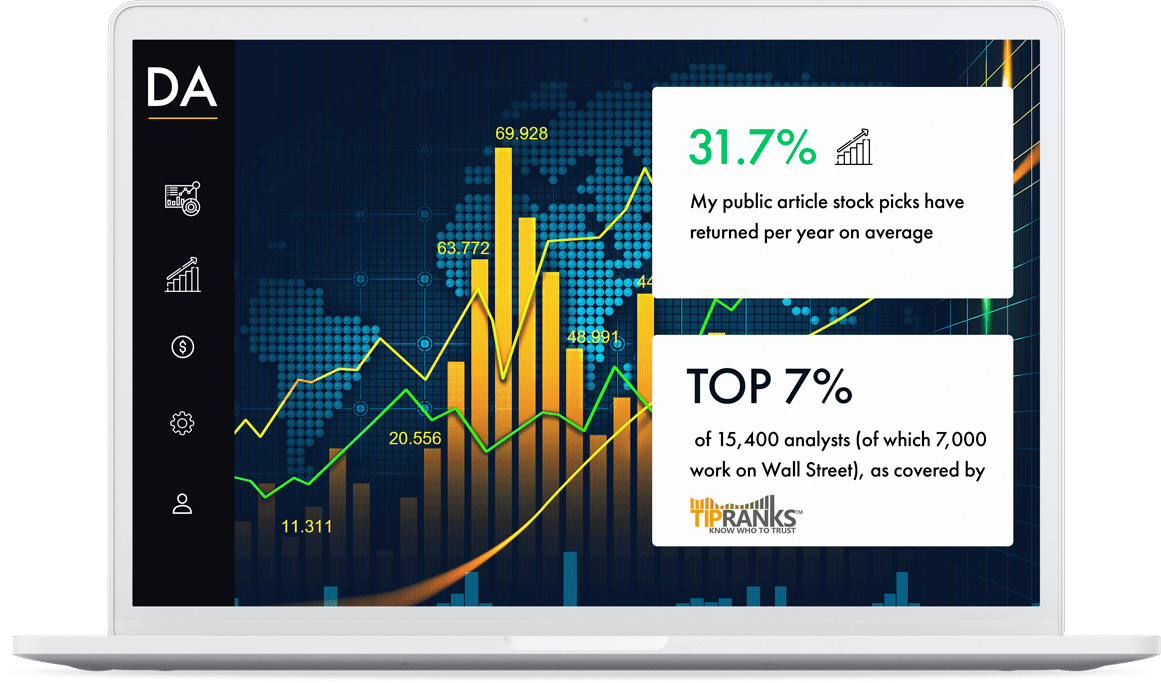The main goal of my investment portfolio, is to generate income. To achieve that goal, I invest in dividend-paying securities. Dividend growth stocks and REITs make up the large majority of my portfolio. I also use a strategy of selling put options. The goal of that strategy is to both diversify and enhance my investing income.
What is a put option?
An option is a contract that gives the buyer the right (but not an obligation) to sell or buy the underlying asset during a specific time frame at a pre-set price.
The pre-set price is called strike price.
There are 2 types of options.
- Call Option (giving the option buyer the right to BUY the underlying asset at a pre-determined price)
- Put Option ( giving the option buyer the right to SELL the underlying asset at the pre-determined price)
My options strategy focuses on SELLING cash-secured put options.
By selling a put option, we are giving the option buyer the right to sell it to us. That means we are a potential buyer in this situation. The option buyer can exercise his right at any time before the expiration date.
“Cash-secured” means that I have cash on my brokerage account to buy the stocks in case the option buyer exercises his right to sell the stocks to me.
Selling put options without having cash set aside is called selling a “naked” put option. It’s a very risky strategy that I avoid.
To manage risk, have enough cash on your brokerage account in case the option gets exercised
Pros of selling put options
- Get paid to wait – Let’s say I identify an investment that fits all my criteria apart from valuation. I’d like to own that business, but at a lower valuation. Instead of waiting/hoping for the stock price to drop, I can sell a put option with a strike price at the level I feel comfortable with. That way, I will get income through the option premium OR will own the shares if the stock price drops the price I am comfortable with.
- Able to set the buying price you want – By selling a put option with a strike price that I deem attractive for the underlying company, I set the buying price that you are comfortable with.
- Immediate return – The option premium gets paid in cash as soon as the contract is sold. That’s an immediate cash return that I, the put option seller, keep no matter what.
Doesn’t matter if the option gets exercised or not – you get to keep the option premium either way.
Cons of selling put options
Selling put options has many potential benefits. However, it’s not without its risks and downsides.
- Risk of losing capital – If the stock price drops below the strike price, you have to buy the stock at a higher price than the current share price. However, the strike price is most likely the price you are willing to buy the stock at anyway. I only sell put options on blue-chip companies at the price I’d like to buy the stock at.
- It requires active management – Unlike buying a stock and just collecting dividends, options selling requires you to actively manage those investments.
- You might not own the stock – If the stock price never drops to the strike price, you likely won’t get assigned the shares. Also, it’s an option buyers decision whether he wants to sell you the shares or not. Option contracts don’t automatically fill once the strike price is reached.
- Have to invest in round lots – Option contracts are traded in lots of 100 shares. This means that each contract represents the right or obligation to transfer 100 shares. This means if 1 option contract with a strike price of $40 gets exercised, the put option seller is required to put up $4000 of capital.
- Ties up your capital – Due to the round lot requirement, cash-covered options require you to have cash in reserve. That cash acts as collateral and is tied up for the duration of the option contract.
I only sell put options on stocks that I’d like to own in my portfolio.
Example
Let’s do an illustrative example.
We are looking to sell a put option for a company trading at $60 per share.
Below we have the list for “out-of-money” put option contracts expiring in 3 months
Out-of-money means that the strike price is below the current share price.
- Strike Price – If the option buyer wants to sell his shares to you, this is the price you pay for each share.
- Bid – This is the premium you can expect to receive from selling the put. It is given as a per share figure. As each option contract is for 100 shares, what you receive for selling 1 contract is 100x the bid price.
- Ask – This is the premium the put buyer must pay. The difference between the bid and the ask is that the market maker charges.
- Open Interest – The amount of option contracts currently active for this expiration date and strike price.
| Strike Price | Bid | Ask | Open Interest |
| $45 | 0.77 | 0.71 | 1551 |
| $47.5 | 0.93 | 1.01 | 0 |
| $50 | 1.33 | 1.39 | 9919 |
| $52.5 | 1.88 | 1.94 | 29688 |
| $55 | 2.67 | 2.71 | 4538 |
| $57.5 | 3.55 | 3.70 | 2618 |
Let’s say I would be interested in buying shares in this company at $52.5 per share.
It’s 12.5% below the current share price of $60 per share.
I can wait and hope for the stock price to drop there.
Alternatively, I can sell a put option and get paid to wait or get assigned shares at the price I picked.
In this case, selling 1 put option with a 3 month expiration date and a $52.5 strike price nets me $188 dollars ( 100x the bid price of 1.88).
That’s an immediate cash return.
Doesn’t matter what happens with the share price – I get to keep that cash.
I also set aside $5250 in case the option buyer wants to use his option of selling me 100 shares at the agreed strike price of $52.5.
$52.5 x 100 = $5250
As I received $188 from selling the contract, the additional capital I need is $5062 ($5250-$188 = $5062)
Possible Outcomes
There are 2 possible outcomes now.
- The share price doesn’t drop below to the strike price of $52.5 before expiration. In this case the option buyer has no reason to exercise his option and the contract expires. I don’t get shares, but I get to keep the $188 premium. The $5200 that I set aside, in case the option gets exercised, is freed up now.
- Before the expiration date, the stock price drops below $52.5 per share. The option buyer exercises his right and sells me 100 shares at $52.5 per share. I now own the asset, at the price I wanted it at. As I also received the option premium, my cost basis is even lower at $50.62 per share.
Calculating option selling yield
By selling the option, I received a $188 premium. I also had to set aside and extra $5062 in case the option gets exercised.
Return can be calculated by dividing the premium by the extra capital needed for collateral.
$188 / $5062 = 3.7%
That’s a 3.7% return in 3 months.
In finance, most returns are calculated on an annualised basis. This makes it easier to compare returns from different investments.
To get an annualised return, we use the following formula:
(Premium/Collateral) X 365/days until expiration)
Using our example we get the following results:
($188/$5062) X (365/92) = 14.7%
The option premium would be an annualised return of 14.7%
Summary
Selling put options is a strategy for experienced investors to actively generate income. It comes in especially handy in overvalued conditions, where it’s hard to find great companies at fair prices. When selling put options, I want to be content with both outcomes (contract expiring unassigned or owning shares). Therefore, I only sell put options on companies I like to own, at the prices I want to buy shares at. Investors focused on income should look into this strategy to see if it fits their investment plan and risk tolerance.
Disclaimer: This is NOT a recommendation for any particular investment or investing strategy. You can lose your invested capital. I am not a financial professional of any kind. The article published should NOT be considered to be investing recommendation or basis for financial planning. Before making any investing or financial decisions, contact an appropriate professional. Figures used in this article are believed to be accurate, but shouldn’t be relied on for investing decisions. I am not responsible for the accuracy of the data presented. All content on this website is for entertainment purposes only.









